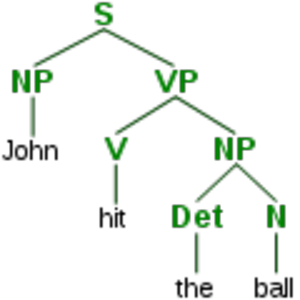Grammar used to make me queasy. Just hearing the word “participle” would set my hair on end. But these days, I can analyze syntax with the best of them. It’s only occasionally that I feel like putting my hands over my ears and shouting when someone suggests diagramming a sentence. How did I get over my fear? I studied, and then I realized that the reason I’d hated grammar in the first place was because most grammar guides read like IRS publications: they’re dense, complicated, and virtually incomprehensible. Grammar itself is easy. It’s all about writing clearly. This tutorial will teach you how to form a basic sentence. All you have to do is remember a few simple rules.
Rule Number One
It’s okay to make mistakes. Everyone does. If there was a chief of the grammar police, even the chief would make mistakes, and then someone-probably a frustrated grammarian who wanted to be the chief-would send him a triumphant email saying, “Aha! You made a mistake,” and the chief would get all huffy and write a nasty email back, and before you know it they would be leaving spiteful messages on one other’s Facebook pages, and there would be this whole battle-of-the-linguists thing that went on for years, cluttering up letter section of The New York Times. But the point I want to make is this: you can’t write perfectly all of the time.
Rule Number Two
There is no such thing as The Ultimate, Unchanging, Perfect, and Wholly Proper English. It doesn’t exist.
Language is constantly evolving. That’s what makes it great and keeps it alive. If it didn’t evolve, it would be a dead language, of no particular use to anyone living, least of all people trying to communicate.
There are, however, basic guidelines designed to make your writing or speech more easily understood. People have been working to perfect them for years-more than 100,000 in fact-and the more you apply them, the more widely understood you’ll be. Which brings us to rule number three.
Rule Number Three
You should try to get it right.
Grammar is not a tool of the wealthy oppressor. It’s not something only ivy-league-educated professors with multiple PhD’s can master. It’s easy. How easy? Here is the main point you need to know:
The Main Point You Need To Know
A sentence is a complete thought.
Are you OK? Check yourself for injuries. A sentence is a complete thought” is the foundation of English grammar. Are you sure you’re all right? Good. We’ll move on.
To express a complete thought a sentence needs to be about something or someone.
In grammar-speak, the something or someone is called the subject. Whatever the subject is doing or having done to it (get your mind out of the gutter) is called the predicate. So, now you know:
A sentence has a subject and a predicate.
Give yourself a pat on the back, but don’t get too comfortable. There will be a test.
In the following simple sentence what is the subject?
He blogs.
“He” is the subject. “Blogs” is the predicate.
That was easy. What about in this simple sentence?
The devastatingly handsome author blogs on a regular basis.
“The devastatingly handsome author” is the whole or complete subject. “Blogs on a regular basis” is the complete predicate, or, in other words, everything in the sentence that isn’t the subject.
A simple sentence has one complete subject and one complete predicate.
So far, so good.
A compound sentence is made of simple sentences joined together.
Joining words are called conjunctions. Examples are “and,” “or,” and “but.” The following is a compound sentence:
The devastatingly handsome author blogs on a regular basis, but he really wants to be a novelist.
And that’s where the first lesson ends. Congratulations. Now you know how to build a sentence, and it didn’t hurt a bit.



